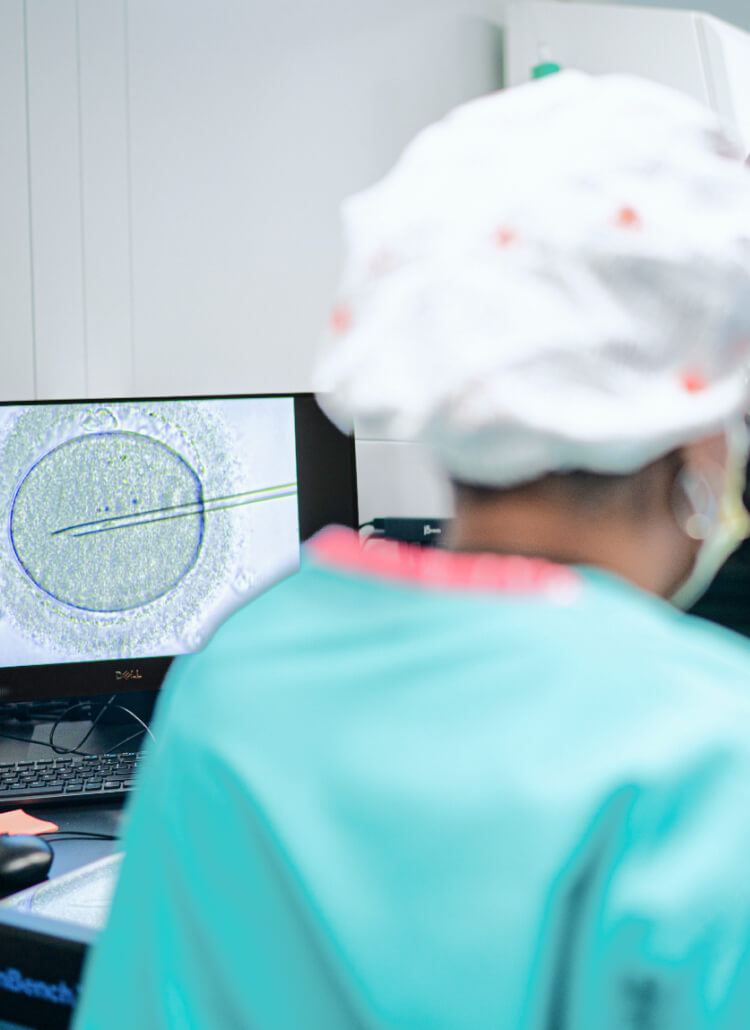Intracytoplasmic Sperm Injection (ICSI)
In most cases at NYU Langone Fertility Center, sperm are combined with the eggs and fertilization occurs naturally. In situations where low sperm count or low sperm motility (movement) is a factor, a single sperm is injected directly into each mature egg in a process called intracytoplasmic sperm injection (ICSI). ICSI is also utilized when frozen donor or partner sperm is utilized, or as well as when donor or patient eggs are thawed for fertilization.
In standard (non-ICSI) IVF, about 50,000 sperm are added to each egg in a petri dish, allowing the sperm to penetrate the eggs "naturally." In cases where the sperm are unable to fertilize the egg on their own, the embryologist can employ ICSI to inject the sperm directly into the egg. If a sperm sample is considered 'borderline,' some eggs may be injected while others are given the chance to fertilize naturally in the petri dish.
In cases that require ICSI, the male partner provides a sperm sample (this usually occurs on the same day as the egg retrieval procedure; however samples can be collected in advance and stored frozen until needed). An embryologist analyzes the sample and isolates the strongest and best swimming (motile) sperm to be used for insemination. To perform ICSI, each egg is held by gentle suction in a glass pipette, and a single sperm is injected through the zona (shell) of the egg using a tiny, glass microneedle. The sperm is deposited deep into the innermost part of the egg (cytoplasm) and the needle is withdrawn.



